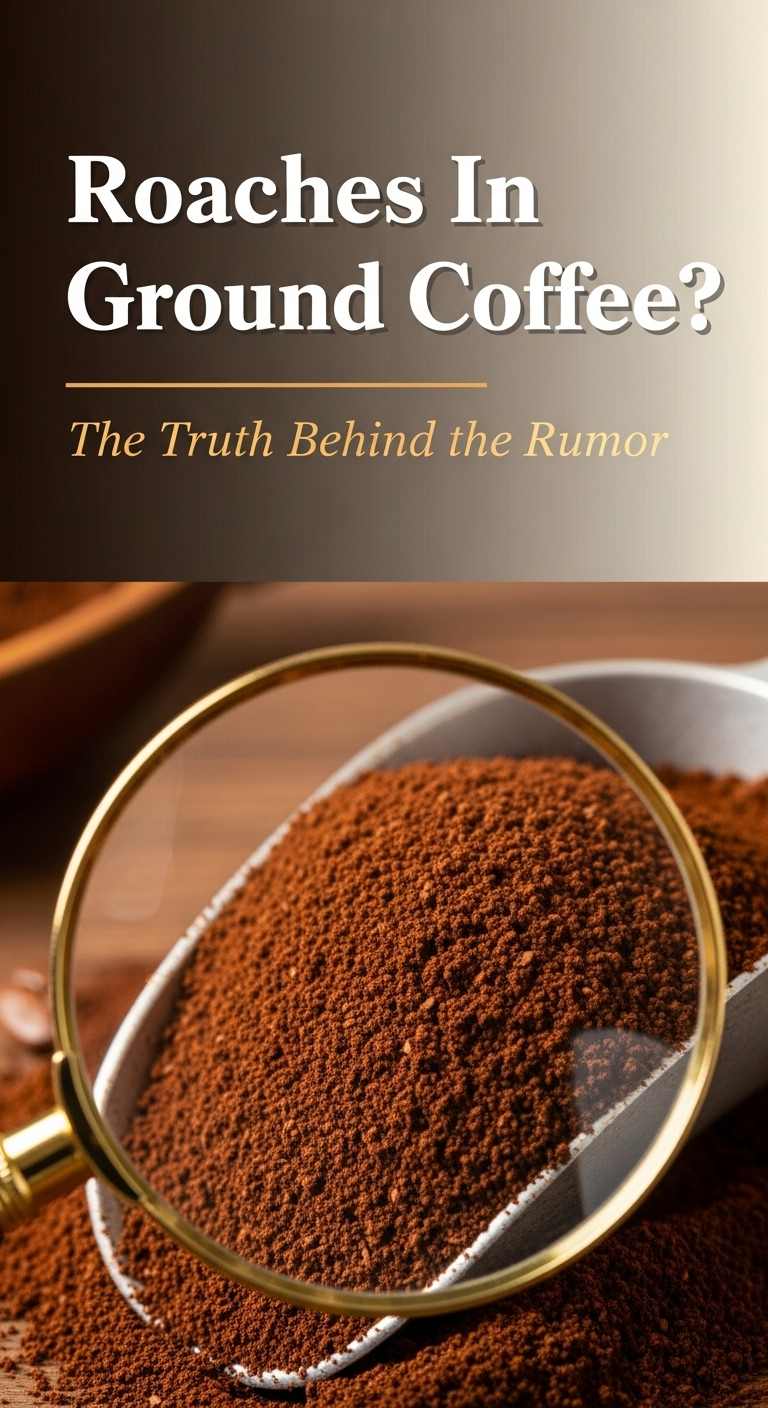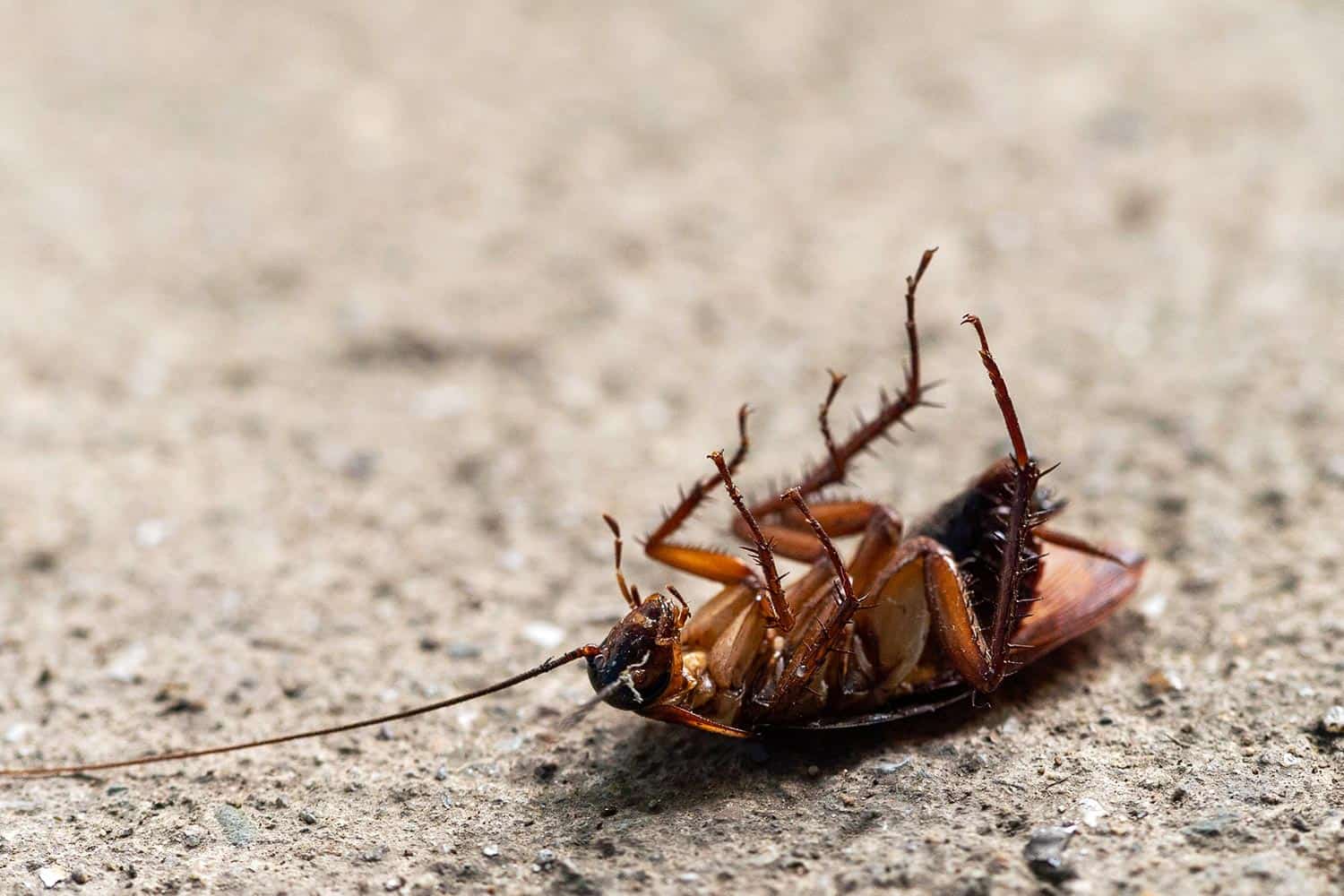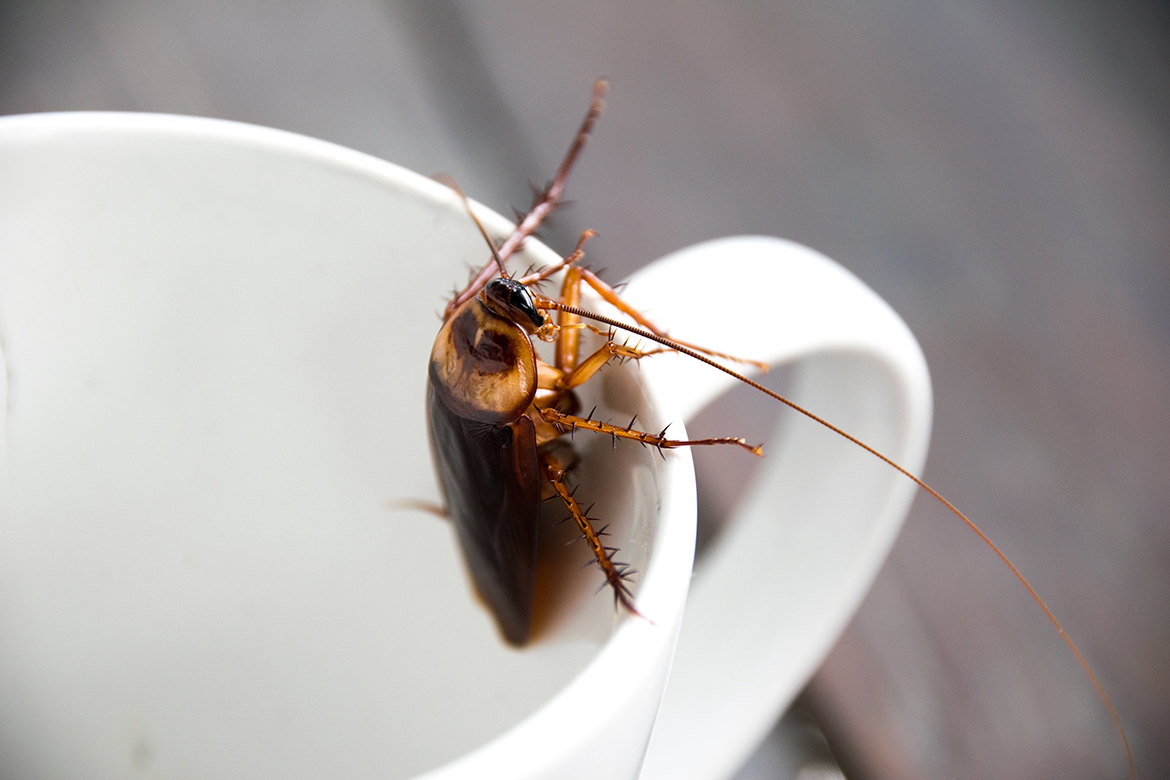As an Amazon Associate CoffeeXplore.com earns from qualifying purchases.
Roaches in Ground Coffee: The Truth Behind the Rumor
You’ve heard the unsettling rumor, a whisper that turns your stomach every time you scoop your morning grounds: are there roaches in ground coffee? It’s a question that can ruin a perfectly good cup, leaving you wondering about the truth behind what’s really in your favorite brew. You’re looking for a straight, factual answer, not sensationalism.
Yes, it is possible for pre-ground coffee to contain cockroach fragments and other insect parts. This is a known aspect of mass food production, and the U.S. FDA sets “acceptable levels” for these unavoidable defects, which are considered safe for consumption.
This guide, leveraging extensive analysis of food processing data and regulatory standards, will unpack the complete story. We will explore exactly how this happens, what the official safety regulations say, who might actually be affected, and what you can do about it. While the thought is unsettling, is it actually a cause for health concern? Let’s look at the facts.
Key Facts
- FDA Regulation Acknowledges Contaminants: The U.S. Food and Drug Administration (FDA) permits up to 10% of green coffee beans to be insect-infested or damaged by count, acknowledging that some level of natural defect is unavoidable in raw agricultural products.
- A Limit Exists for Ground Coffee: For ground coffee, the FDA’s Defect Action Levels often cited by food safety experts allow for up to 4-6% of insect fragments and other filth by weight. These are maximums, and averages are typically lower.
- Roasting Sterilizes but Doesn’t Eliminate: The high heat of the roasting process effectively kills any live insects and sterilizes the beans. However, as noted in processing analyses, it does not physically remove the pre-existing insect fragments.
- Allergies Are the Primary Health Concern: For the vast majority of people, these fragments are harmless. The main health risk is for individuals with a specific and severe allergy to cockroaches, who may experience reactions like headaches or congestion.
- Whole Beans Are the Solution: The single most effective way to avoid this issue is to buy whole coffee beans and grind them at home just before brewing. This gives you maximum control over the final product.
The Truth About Roaches in Your Coffee: A Science-Based Explainer
The short, direct answer is yes, pre-ground coffee can and sometimes does contain trace amounts of cockroaches and other insects. This isn’t a scandalous secret but a documented reality of processing a raw agricultural product on a massive scale. For most people, this is nothing to worry about from a health perspective. But if the idea makes you squirm, understanding why it happens is the first step to avoiding it.
Let’s break it down:
* It’s an Industry-Wide Issue: This is not specific to one brand but is a consequence of how coffee beans are harvested, stored, and processed in huge quantities.
* It’s Regulated: Government bodies like the FDA are aware of this and have set specific limits on how many “insect parts” are legally allowed in food.
* It’s Generally Safe: These accepted levels are considered safe for human consumption and do not pose a health risk to the average person.
* Allergies Are the Exception: The only real concern is for a small number of people who have severe cockroach allergies.
How Do Bugs Get Into Ground Coffee? The Four-Step Process
Insect contamination in pre-ground coffee isn’t a sign of a dirty factory; it’s a multi-stage issue that begins long before the beans are ever roasted. Insect contamination occurs in a few key stages: pests infest large coffee bean stockpiles, tiny fragments are impossible to completely filter out during mass grinding, and they become part of the final product.

Here is the step-by-step journey of how insect fragments end up in your coffee tin:
- Infestation at the Source: It all starts where the coffee is grown and stored. Huge stockpiles of green, unroasted coffee beans sit in warehouses, making them an attractive target for various pests. While cockroaches are drawn to the organic matter and scent in these storage facilities, they aren’t the only culprits. Pests like the coffee berry borer beetle and the coffee bean weevil are common invaders that infest the beans themselves.
-
The Grinding Process: Once these beans are collected for processing, it’s virtually impossible to separate every single tiny insect fragment from the millions of beans. During the industrial grinding phase, any residual pests or their fragments are pulverized right along with the coffee beans.
-
Roasting Kills, But Doesn’t Remove: This is a key point. The roasting process, which occurs at very high temperatures, does sterilize the coffee, killing any live insects and bacteria. However, it can’t make the physical, non-living fragments simply eliminate themselves. They become a cooked, sterile part of the ground coffee mixture.
-
Insignificant by Volume: The final amount of insect material is minuscule compared to the sheer volume of coffee. Because the fragments are so small and the percentage is so low, they go completely undetected in the final product’s taste, texture, and aroma.

The FDA’s Role: What Are “Acceptable” Levels of Bugs in Coffee?
The idea of any foreign matter in our food can be alarming, but regulatory bodies have long-established guidelines for it. The FDA’s Food Defect Levels Handbook permits a small percentage of insect fragments in ground coffee (up to 10% of beans insect-infested or 4-6% fragments by weight) because it’s impossible to remove all-natural defects. These levels are considered safe for human consumption.
This isn’t a loophole; it’s a practical acknowledgment of agricultural reality. The FDA puts it this way:
It is economically impractical to grow, harvest, or process raw products that are totally free of non-hazardous, naturally occurring, unavoidable defects.
Essentially, the FDA sets a “Defect Action Level” (DAL). If a food product is found to contain more defects than the DAL allows, the agency will take action. For coffee, the limits are quite specific.
| Contaminant Type | FDA Acceptable Limit (as cited) |
|---|---|
| Insect-Infested/Damaged Beans | Up to 10% by count (for green beans) |
| Insect Fragments/Filth | Often cited as 4-6% by weight (for ground) |
It’s crucial to remember that these are the maximum permissible levels. Most batches of coffee have far lower amounts. It might be surprising, but coffee isn’t unique. The FDA has similar guidelines for everything from wheat flour to canned mushrooms and even chocolate, as cited in the Food Defect Levels Handbook.
The Cockroach-Coffee Allergy: A Real but Rare Concern
For 99% of coffee drinkers, the trace amounts of insect fragments are completely harmless. However, for individuals with a specific, severe allergy to cockroaches, the trace amounts in pre-ground coffee could potentially trigger symptoms like headaches or congestion.
This connection was famously highlighted by entomologist Dr. Douglas Emlen. The story, which has since become a cornerstone of this topic, involved a colleague with a known, severe allergy to cockroaches.
Dr. Emlen shared an anecdote about a researcher who developed a cockroach allergy from handling them in a lab. This person found that whenever they drank pre-ground coffee from a can, they would have an allergic reaction. When they switched to brewing premium, whole-bean coffee that they ground themselves, the reaction disappeared. The conclusion was that the trace amounts of ground-up roaches in the mass-produced coffee were enough to trigger their specific, heightened sensitivity.

This is the central health concern. Cockroach allergens are a known trigger for asthma and other allergic responses. If you consistently experience allergy-like symptoms after drinking pre-ground coffee but not from other caffeine sources, this could be a potential, albeit rare, explanation.
Potential symptoms for those with a severe allergy might include:
* Headaches
* Nasal congestion or a runny nose
* General feeling of malaise
* In very severe cases, asthma flare-ups
Pro Tip: If you consistently experience allergy-like symptoms after drinking pre-ground coffee, it might be worth discussing with a medical professional or trying an elimination test with whole-bean coffee.
How to Drink Cockroach-Free (or Almost-Free) Coffee
If you’re concerned about the “ick factor” or have potential allergies, the good news is that you have complete control over minimizing your exposure. To significantly reduce or avoid insect fragments in your coffee, the most effective solution is to buy whole coffee beans and grind them yourself right before brewing.
Ready to take control of your grind? The difference in freshness and peace of mind can be a game-changer. Here’s the simple, three-step plan for a cleaner cup:
- Buy Whole Coffee Beans: This is the most important step. Whole beans are easier to inspect for quality. The beans destined for pre-ground coffee are often of a lower grade, whereas whole beans are typically subjected to more rigorous quality control. You can visually inspect them for defects.
-
Grind Fresh at Home: Invest in a decent coffee grinder. By grinding just enough for your brew right before you make it, you ensure that the only thing getting ground is the coffee bean itself. This single action virtually eliminates the possibility of consuming pre-ground pests.
-
Consider Your Source: While not a guarantee, buying from smaller, independent roasters can sometimes mean more meticulous quality control. These roasters often work with smaller, higher-quality lots of beans and may have a more hands-on approach to sorting and processing than massive industrial operations.
For those ready to make the switch, investing in a quality grinder is the most critical step to ensure a fresh, clean, and delicious cup every time.
FAQs About Bugs in Ground Coffee
Here are direct answers to some of the most common follow-up questions about this topic.
What bug leaves things that look like coffee grounds?
Cockroach droppings or the fecal pellets (frass) from drywood termites can resemble coffee grounds. Cockroach poop is often more uniform and sticky, while termite frass looks more like sawdust. To tell them apart from actual coffee, look at the context. If you find these “grounds” in clean cupboards, away from your coffee maker, they are likely a sign of pests.
Does coffee attract cockroaches?
Yes, cockroaches are attracted to the scent of coffee beans and organic matter in general, which is why infestations can happen in large storage stockpiles. While some sources suggest the acidity of brewed coffee might be a deterrent, the raw, fragrant beans in storage are an attractant for pests looking for food and shelter.
What percentage of cockroaches is allowed in coffee?
The FDA allows up to 10% of green coffee beans to be insect-infested or damaged, and allows for up to 4-6% of insect parts by weight in ground coffee. This limit applies to all insect fragments, not just cockroaches. It’s a general benchmark for all unavoidable insect matter that might get mixed in during processing.
Is there a similar issue with cockroaches in chocolate?
Yes, the FDA has similar Food Defect Action Levels for many products. For example, chocolate can also contain a certain level of insect fragments, as it’s an unavoidable part of processing raw agricultural goods. This isn’t a problem unique to coffee; it’s a reality for many mass-produced foods derived from raw crops, including peanut butter, spices, and flour.
Final Summary: Enjoy Your Coffee with Confidence
The thought of bugs in your coffee is undeniably unpleasant, but the reality is far less dramatic than the rumor suggests. For the overwhelming majority of people, the microscopic, sterilized insect fragments in pre-ground coffee pose no health risk and are regulated to safe levels. The primary concern is for a very small group with severe cockroach allergies.
Here’s what we’ve learned:
* Yes, trace amounts of insects can be found in pre-ground coffee due to unavoidable agricultural realities.
* The FDA sets strict, safe limits for these “unavoidable defects.”
* The only significant health risk is for those with a specific, severe cockroach allergy.
* You can easily avoid this issue entirely by buying whole beans and grinding them yourself.
Now that you have the facts, you can make an informed choice about the coffee you drink. You have the power to control what goes into your cup, ensuring it’s as fresh and pure as you want it to be. What will be in your cup tomorrow morning?
Last update on 2025-12-15 / Affiliate links / Images from Amazon Product Advertising API

